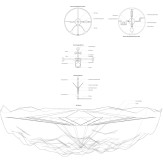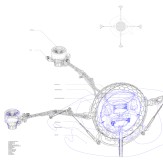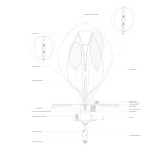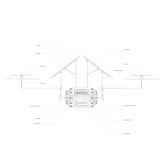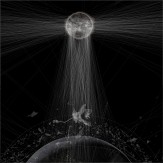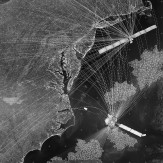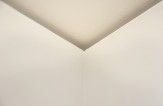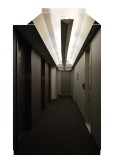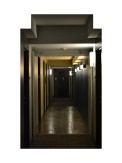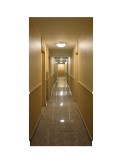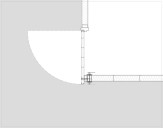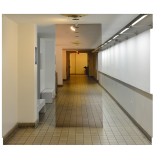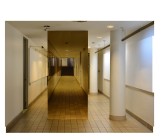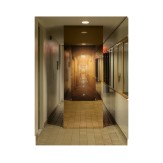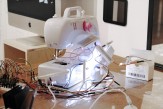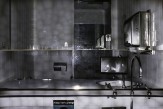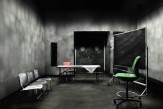Master of Architecture II Thesis 2019
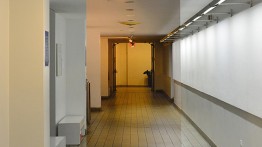
GRADUATE THESIS
Assistant Professor Michael Young
Adjunct Assistant Professor Anna Bokov
What Is Contemporary?
To work through a design thesis is to ask the process of creation, to steer, divert, reflect, and problematize an initial set of questions. A thesis project does not seek to conclusively answer these questions which set it on its way; in the most exemplary instances, it resolves itself into a different set of questions informed by the labor and objects of design. This requires knowledge, research, and experimentation in order to establish a position within a discipline's discursive framework. Furthermore, a thesis must engage the pressing issues of one's time. It must ask; What is it to be contemporary?
This is a complex question. Deciding when the contemporary began depends on the issue under discussion. In a certain sense, we may all agree that we are contemporaries, yet disagree completely on what the key issues are defining our shared moment. The process of establishing an architectural thesis by necessity takes a stand on how, when, and why a discipline focuses its attention on one set of issues instead of another. The hope is that in asking these questions a critical discourse can be sparked, leading us to reevaluate assumptions regarding what is contemporary.
The seven thesis projects explore salient ideas of the contemporary in the discipline of architecture. They cover topics such as redefining the relationship between reality and rendering, questioning the plausible degrees of non-synthesis between architectural representations, developing collective sentient apparatuses for experiencing electromagnetic spectrum, blurring boundaries between air and architecture through experiments with translucency, living in symbiosis with plastics, questioning the screen as building facade, and interrogating the familiar by manipulating the architectural background.
< Back to Selected Graduate Design Studio Projects
VIEW INDIVIDUAL PROJECTS BELOW
Projects
-

Sentient Clouds
-
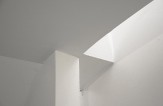
Uncanny Ordinary
-
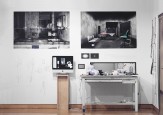
Rendering Reality / Reality Rendering
Back
Sentient Clouds
Xiaoxiao Zhao
This thesis speculates on the environmental perception of diverse radiation spaces from cosmic rays and UV radiation to water vapor signals and 5G mobile communication networks. Cloud-like clusters, proposed as collective sentient apparatuses, float at certain altitudes where different kinds of radiation arrive at their furthest reach, in order to capture specific frequencies and signals. Each cluster is composed of a certain type of unit containing sensors and interactive components working collaboratively to observe a specific type of signal. As a result, the clusters formulate a multidimensional communication network transmitting various signals to designated users through perceptible spectacles. A zone of influence on the ground expands from Manhattan to the globe as the altitude of distribution rises from the city to the clouds and up to space stations and satellites. Through environmental imagination, the project aims to raise public awareness of ecological and social problems from the ozone hole to solar energy and spectrum conflicts as a new public realm.
Uncanny Ordinary
Lien-Kuang Yeh
Our familiarity with the ordinary is built out of conventions that gradually condition us. This thesis interrogates this familiarity, exploring an alternative reality through the experience of the uncanny, “distancing reality from reality.” The project provokes a dream-like experience and conceptual uncertainty, questioning invisible conventional constraints. By defamiliarizing architectural elements and reorienting attention, the project superimposes multiple realities through photography, construction documents, and full-scale physical objects. The distinction between the real and the unreal starts to blur, altering the perception of the ordinary.
Rendering Reality / Reality Rendering
Haotian Zhang
This project opens the black box of rendering and transforms it into a mode of fabrication, countering the myth that rendering is banal labor. Rendering is posited not as a packaged toolkit, but as the measurement of space and calculation of shading, a process that architects have access to and agency over. The project prolongs, and thus makes evident, the typically concealed processes of rendering, and then reconstructs them through analog modes. It further challenges our faithfulness to that which rendering represents—whether a digital model or a photorealistic scene—and explores the tension between reality and its digitized mimicry. The incompatibility between the resulting analog and rendering constitutes the project’s aesthetics.

